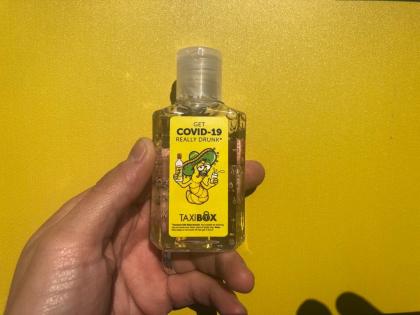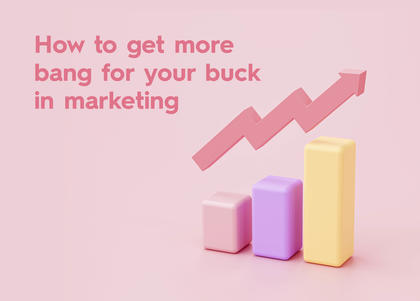Since starting Good Things – the 8 or so years experience I’ve had in the promotional products industry has taught me that most people fall into 2 groups: Those that see value and love promotional products and those who see promo as cheap and tacky.
 I’ve found that one’s perception is directly related to their experience – if you are given a poorly made, cheap item then it would make sense that you aren’t a big fan. A few years ago I was lucky enough to be at the Tour De France – for those who have been they would have experienced the motorcade of brand sponsors that proceeds the cyclists literally throwing products down on people.
I’ve found that one’s perception is directly related to their experience – if you are given a poorly made, cheap item then it would make sense that you aren’t a big fan. A few years ago I was lucky enough to be at the Tour De France – for those who have been they would have experienced the motorcade of brand sponsors that proceeds the cyclists literally throwing products down on people.
As I was being showered by gifts – I quickly realised that throwing tens of thousands of items to roadside viewers meant that items had to be cheap, like, dirt cheap. Once I had picked up the crumpled plastic banner by the roadside a few things had dawned on me. Firstly, some of these brands like Vittel (below) must throw away literally millions of ‘giveaways’. Suffice to say the appreciation factor of the 10 year old kid next to me who picked one up was similar to mine, indifferent and a more than a little unimpressed.
But perhaps the marketing boffins at Vittel know a lot more about their target market than I do. A printed banner might cost them 3c and having such a big captive audience means that this is the best way to get ROI and massive reach – think of it as cost per impression if you are comparing it to digital marketing. I am sure the VIPs in the Vittel Corporate Marquee would get much more impressive products!
Below I have outlined a few of the key differentiators I have found that separate promotional advocates vs skeptics:
#1 Quality, always
We have done work for clients before that due to their volumes required pens at around a 10c price point. After extensive testing we just simply could not guarantee a reliable ink pen that wrote consistently at that price point. We get that people aren’t all shopping for a Rolex but products need to be functional because perception is reality. If you can provide a client, customer or potential customer with something they would ordinarily pay for with their own money then you are usually on to a winning formula. Conversely putting yourself in their shoes – if you were given x item would you want to keep it, or would it just become landfill? Quality is usually a massive factor in this decision process.
#2 The more targeted the better
Doing your research, particularly early on in the process usually goes a long way. Many people will classify their target markets into broad categories such as teenagers, lawyers or professionals. The more you can drill down the more specificity and tailoring you can do. Take a page out of the book of Google or Facebook marketing here. Teenagers can be broken down to 12-14 year olds, I would go further such as what geographical area? What about interest groups, whether it be video games or fashion? Once you breakdown the information into small parts all of a sudden an item such as a beach ball isn’t looking so great compared to perhaps a phone pop top that most teenagers have on their phones nowadays.
#3 Be fun and Useful
Nobody needs just another cap – in the middle of winter, or an Umbrella in summer. Context is key. The best way for promotional products to pack a punch is relevance. For example, many of our clients are finding their branded hand sanitisers during covids as being the best marketing promotional product ever. They are allowing their clients to maintain safe clean hands and double as effectively it is saving the client money from going out and buying this product. A great example of some creative working its way into conveying a fun message is some sanitiser we did for a client Taxibox below. Our data showed that this was positively received by 9 out of 10 recipients and bought a moment of delight upon receiving. Not all impact necessarily has to cost more.

Marketing objectives are also fundamental to the success of the campaign. In some cases branded promotional products are only about display and visibility, so arguably quality and targeting are less important, but from my experience quality does not need to cost substantially more and targeting can further the marketing reach substantially.
If you follow the top 3 guidelines as above I have invariably found that in today’s digital world making your business tangible is a fantastic way to keep your business front of mind and visible.





